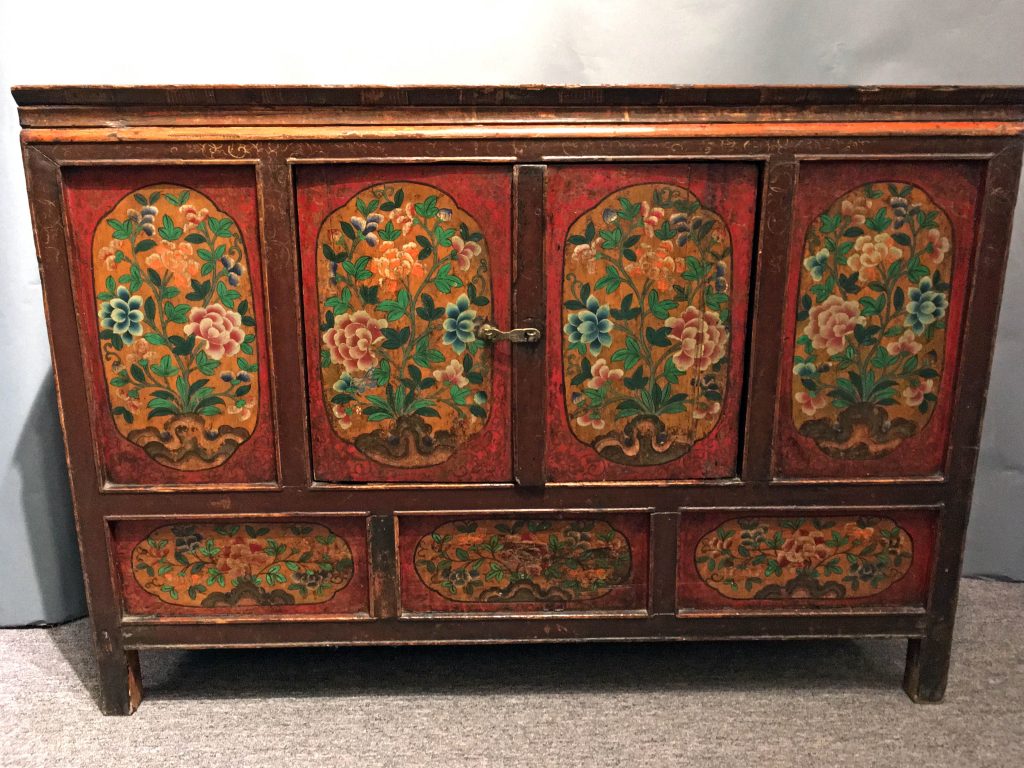 19th c, pine. Authentic antique piece; auspicious decorations painted with natural color pigments. 48.75″ w, 15.5″ d, 34″ h.
19th c, pine. Authentic antique piece; auspicious decorations painted with natural color pigments. 48.75″ w, 15.5″ d, 34″ h.
Tibet is not known to have fine furniture like there is in China. Carpentry and type of wood as building material has never been noteworthy to Tibetans because the country is located on a high plateau where only pine and other conifer trees can grow. The Tibetans love nature and colors. To them the main value lies in the aesthetic value of painted decorations and not on building material and construction.
This cabinet, however, shows some influence from China. It has traditional method of construction, revealing exposed tenons and wooden nail-heads the colorful decorations have not obscure. Its sides has the frame-and-recessed panel construction, with blade marks showing. The seven painted panels in front are set recessed within beaded frame members painted with gilded scrolling vines. The two middle panels at the top serve as doors that can slide out at right angle on hidden swivel hinges. One door panel is fitted with a metal hasp that can lock to a stud on the opposite door.
The seven recessed panels are painted red. In the middle of this red ground is a black-lined cartouche with a mustard-yellow background. Within this cartouche is painted peony flowers in vibrant shades of red and blue with the petals edged in white, and green leaves on branches growing from a brown color root system. Since the 19th century, due to trade and influence from China, many Tibetans, instead of wanting religious symbols painted as offerings to deities to gain merits to attain enlightenment for favorable rebirth, prefer symbols that would grant earthly riches and blessings. To the Chinese, peony is an auspicious symbol of wealth. This cabinet may have been made for an affluent merchant to store his personal belongings rather than religious items.
This cabinet is an original relic, proven by having traces of yak butter grease on the surface of the wood. For centuries Tibetans use yak butter for cooking and as fuel for their butter lamps which seem to be burning day and night in their homes and monasteries. Acumination of grease on furniture is natural after a long period of time. An authentic antique piece is rare today as during the Chinese Cultural Revolution, “class struggle” to do away the “old society” has caused many painted furniture in Tibet to be vandalized or destroyed. As a result, to preserve what is left, the Tibetan government has banned any antique from leaving the country. This chest has survived in excellent condition and shows a wonderful patina of old age. Its colorful exotic look would look well in any room, traditional or contemporary.